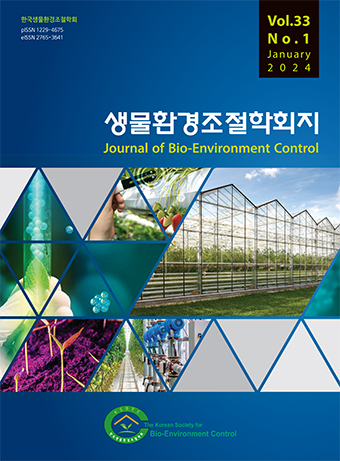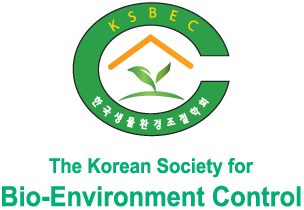Original Articles
- Publisher :The Korean Society for Bio-Environment Control
- Publisher(Ko) :(사)한국생물환경조절학회
- Journal Title :Journal of Bio-Environment Control
- Journal Title(Ko) :생물환경조절학회지
- Volume : 30
- No :2
- Pages :95-100
- Received Date : 2021-02-15
- Revised Date : 2021-03-21
- Accepted Date : 2021-03-23
- DOI :https://doi.org/10.12791/KSBEC.2021.30.2.095



 Journal of Bio-Environment Control
Journal of Bio-Environment Control









